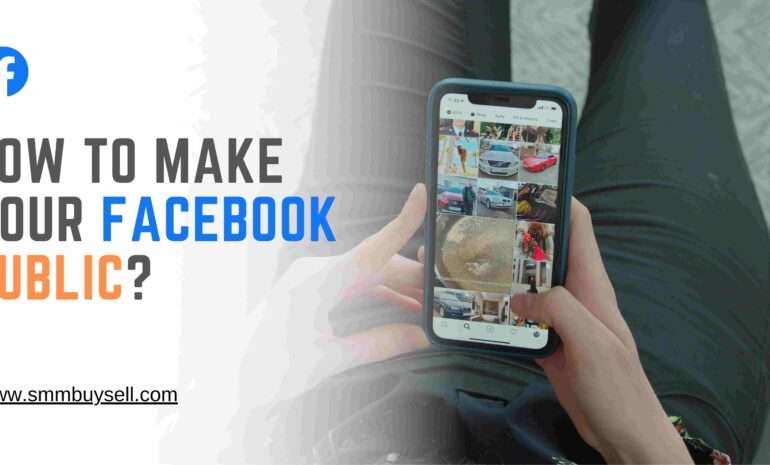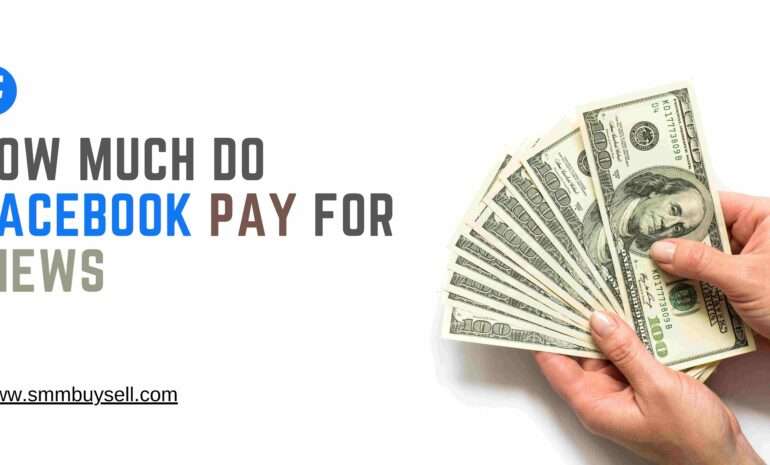According to recent statistics from Influencer Marketing Hub, Facebook offers various ways for content creators to monetize their videos, including earning revenue from video views.
While the exact payment rates can vary, it’s important to note that Facebook’s payment structure for video views is primarily based on the platform’s ad revenue.
Therefore, the amount Facebook pays for views can fluctuate depending on factors such as the region, audience engagement, and the type of content being viewed.
Let’s explore the details of how much Facebook pays for views and what factors influence these earnings.
approximate income for different amounts of views on Facebook
Here’s an approximate income breakdown for different amounts of views on Facebook in a table chart:
| Views Range | Approximate Income Range |
|---|---|
| 1,000 – 10,000 | $1 – $10 |
| 10,000 – 100,000 | $10 – $100 |
| 100,000 – 1M | $100 – $1,000 |
| 1M – 10M | $1,000 – $10,000 |
| 10M+ | $10,000+ (varies significantly) |
Note: These income ranges are approximate and can vary based on various factors, including the revenue-sharing model, geographical location of the audience, level of engagement, video content type, advertiser demand, and changes in Facebook’s monetization policies. It’s important to remember that these figures are just estimates and actual earnings can differ.
Understanding Facebook’s Payment Structure for Videos
Facebook’s payment structure for videos involves a revenue-sharing model that allows content creators to earn money from their video content.

Here are the key elements to understand:
Ad Breaks: Ad Breaks is Facebook’s program that enables creators to monetize their videos by including short ads within their content. Ad Breaks can be inserted manually or automatically during eligible videos.
Revenue Sharing: Facebook operates on a revenue-sharing basis with content creators. This means that Facebook retains a portion of the ad revenue generated from ads shown in videos, while the remaining amount is paid to the content creator.
Ad Rates: The ad rates on Facebook can vary based on factors such as the type of content, target audience, advertiser demand, and geographic location. Different regions may have different ad rates, resulting in varying payment amounts for views.
Monetization Eligibility: To participate in the Ad Breaks program and earn money from videos, content creators need to meet specific eligibility requirements. These requirements may include factors like having a certain number of followers, adhering to community guidelines, and meeting the necessary engagement thresholds.
Engagement Metrics: Facebook considers various engagement metrics to determine payment for views. These metrics include video views, watch time, audience retention, and viewer interactions such as likes, comments, and shares. Higher levels of engagement generally result in higher earnings.
Payment Methods: Content creators need to set up their payment methods within the Facebook Creator Studio. This involves linking a bank account or PayPal account to receive payments.
It’s important to note that the exact payment structure and rates can vary based on changes to Facebook’s monetization policies and algorithms. Creators are encouraged to stay updated with Facebook’s guidelines and announcements to understand any updates or modifications to the payment structure for videos.
Relationship between Video Length, Completion Rates, and Earnings in facebook video
The relationship between video length, completion rates, and earnings in Facebook videos can be complex and can vary depending on several factors.

Here are some key points to consider:
Video Length: The length of a video can impact its completion rates and, subsequently, its earnings potential. Shorter videos generally have a higher likelihood of being watched until the end compared to longer videos. However, the optimal video length can vary depending on the content and audience preferences.
Completion Rates: Completion rates refer to the percentage of viewers who watch a video from start to finish. Higher completion rates indicate that viewers are engaged and interested in the content. Facebook’s algorithm takes completion rates into account when determining the reach and distribution of videos.
Audience Engagement: Higher completion rates and greater audience engagement, such as likes, comments, and shares, can positively influence the performance of a video on Facebook. Engaging content that keeps viewers interested throughout the video may result in better visibility and potentially higher earnings.
Ad Placement: Facebook typically inserts ads during videos, including Ad Breaks. The placement of these ads can affect completion rates and, consequently, earnings. Viewers may be more likely to drop off if ads interrupt the viewing experience excessively or if they occur early in longer videos.
Ad Revenue: Earnings from Facebook videos are primarily generated through the revenue-sharing model, where Facebook retains a portion of the ad revenue and pays the rest to content creators. Ad rates can vary based on factors such as the type of content, target audience, and advertiser demand.
Optimization and Experimentation: Content creators can optimize their videos by considering audience preferences and testing different video lengths. Experimenting with video length and analyzing completion rates and audience feedback can help determine the optimal video length for maximizing earnings.
It’s important to note that while shorter videos may have higher completion rates, longer videos can offer opportunities for in-depth storytelling or providing valuable content, which can lead to higher engagement and potentially higher earnings. It’s essential to strike a balance between video length, content quality, and audience engagement to optimize earnings on Facebook videos.
Strategies for Optimizing Video Length and Keeping Viewers Engaged
Optimizing video length and keeping viewers engaged is crucial for maximizing the impact of your Facebook videos.

Here are some strategies to consider:
Know your audience: Understand the preferences and behavior of your target audience. Analyze their demographics, interests, and engagement patterns to tailor your video length accordingly. Different audiences may have varying attention spans and preferences for concise or more in-depth content.
Focus on quality content: Regardless of video length, ensure that your content is high-quality, engaging, and valuable to your viewers. Deliver your message efficiently and effectively, keeping it concise and relevant.
Grab attention early: Capture your audience’s attention within the first few seconds of the video. Use compelling visuals, captivating hooks, or intriguing questions to immediately hook viewers and entice them to continue watching.
Maintain a strong pace: Regardless of video length, keep the pace of your content engaging and dynamic. Avoid prolonged periods of slow or uneventful segments that might cause viewers to lose interest.
Use storytelling techniques: Incorporate storytelling elements to captivate your audience and create an emotional connection. Engaging narratives and compelling storytelling can help retain viewers’ attention throughout the video.
Provide value throughout: Ensure that your video delivers value to viewers from start to finish. Whether it’s entertainment, education, or solving a problem, consistently provide content that meets your audience’s needs and expectations.
Utilize visuals and editing techniques: Make use of visually appealing elements, such as graphics, animations, and b-roll footage, to enhance the viewer experience. Effective editing techniques can help maintain viewer interest and create a more polished video.
Consider video series or episodic content: If your content lends itself to longer-form videos, consider breaking it down into a series or episodic format. This approach can build anticipation and encourage viewers to return for subsequent episodes.
Analyze viewer data and feedback: Regularly analyze viewer data, including watch time, completion rates, and audience feedback. Pay attention to patterns and trends to gain insights into what resonates with your audience and adjust your video length accordingly.
Test and iterate: Experiment with different video lengths and monitor their performance. Conduct A/B testing to compare the engagement and completion rates of videos with varying lengths. Use the data to refine your approach and optimize video length over time.
Remember, there is no one-size-fits-all solution when it comes to video length. It’s important to align your content with your audience’s preferences, experiment with different approaches, and continuously refine your strategy based on data and feedback.
hypothetical examples of different facebook content creators with their approximate views and income
It’s important to note that these figures can vary greatly depending on various factors, including the niche, audience size, engagement, and monetization strategies.

Here are a few hypothetical examples:
Lifestyle Blogger:
Approximate views: 500,000 views per video
Approximate income: $500 – $1,500 per video
Travel Vlogger:
Approximate views: 1 million views per video
Approximate income: $1,000 – $3,000 per video
DIY/Crafts Channel:
Approximate views: 2 million views per video
Approximate income: $2,000 – $5,000 per video
Gaming Influencer:
Approximate views: 5 million views per video
Approximate income: $5,000 – $10,000 per video
Comedy Sketch Channel:
Approximate views: 10 million views per video
Approximate income: $10,000 – $20,000 per video
In conclusion, determining how much Facebook pays for views is a complex process influenced by several factors. The revenue-sharing model, geographical location of the audience, level of engagement, video length, and demand from advertisers all play a role in determining the payment for views. It’s important to note that payment amounts can vary widely and are impacted by changes in Facebook’s monetization policies and algorithms.
Content creators should stay informed, focus on creating engaging content, and adapt their strategies to maximize their earnings on the platform. Ultimately, the actual payment for views on Facebook depends on a combination of these factors and the specific circumstances of each content creator.


